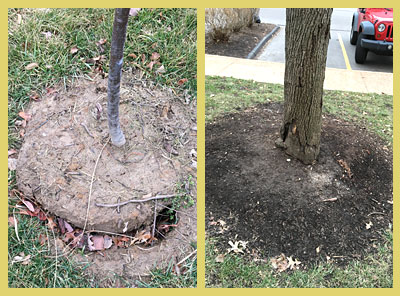Tim’s tips for February Lawn and Garden Care
There are many tasks that need to be performed in the yard and garden at this time.
If you mow your own lawn, give your mower a spring tune up. Get blades sharpened, change oil, check for mechanical problems and check that your blade is set at the right height for the type of grass you have.
If your turf has too much acid apply lime to correct the PH.
If your PH is too high (too alkaline) and your soil is compacted, add some gypsum. Gypsum will also combat the effects of salinity and sodicity in the soil that may occur due to irrigation and the use of ice melting products. Gypsum reduces soil crusting and aids water penetration into the soil.
Scale in trees appear this month and they are crawling. Now is a good time to use dormant spray/horticultural oil if you need to control them. Dormant spray/horticultural oil is a product that does not discriminate between beneficial and non beneficial invertebrates, so it’s best to apply it for scale when other invertebrates are not yet active.

February is a good time to prune trees, shrubs and perennials, especially fruit trees. Some evergreens are not yet ready for pruning. Prune pines, holly and spruces now. Wait another month to prune boxwoods and yews.
Take a look at your lawn and planting beds. Unwanted woody plants can be a problem. Look for invasives such as Mulberry and Honeysuckle. If you can identify them without their leaves, pull or dig them as soon as you can. If you can’t pull or dig the unwanted woody plant out, cut off as much of the stem as you can and dab an herbicide product onto the end of the stub. You can apply the herbicide with a paintbrush or bingo markers. For safety wear gloves and use eye protection while applying. Ferti-lome Brush Killer Stump Killer is a product sold at Schnarr’s that would be suitable.
It’s drier than normal for this time of year, so water your evergreens now.
